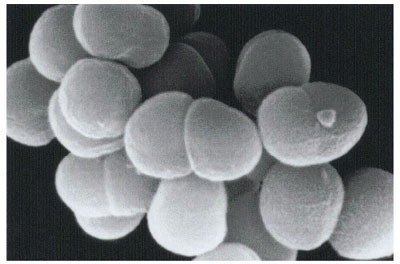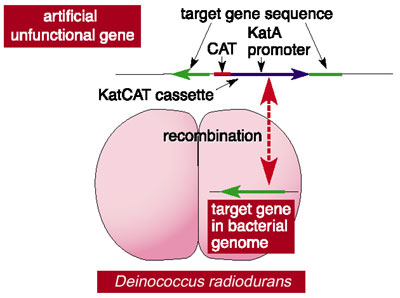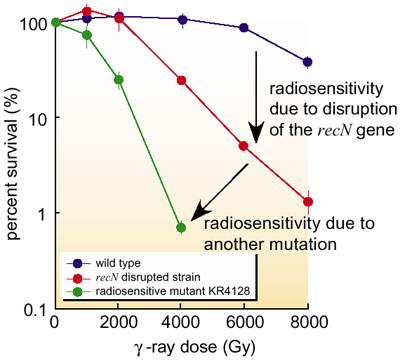Various ventures of post-genomic research are now in progress, which solve the function of genes on the basis of the genomic information acquired from a series of genome projects that started in the second half of the 1990s. The complete genome sequence of Deinococcus radiodurans (D. radiodurans), which we are studying, was also determined (Fig. 9-5). Before completion of the genome project, we examined prospective strategies for post-genomic research, and then established a method for disrupting the specific gene of D. radiodurans with the objective of analyzing the function of genes discovered during the genome project.
The first step in disrupting the target gene is to construct an artificial unfunctional gene using a drug-resistant gene cassette (Fig. 9-6). The unfunctional gene so constructed was then transfected into the bacterial cell, and recombined with the normal (functional) target gene in the bacterial genome. Our results indicate that this procedure provides a high efficiency method for obtaining a specific gene-disrupted strain of D. radiodurans . With this method, we have discovered that the radiosensitive mutant strain KR4128 has another mutation in the DNA repair gene apart from recN.
This technique will enable us to analyze the function of genes one by one through disruption of the D. radiodurans genes whose functions are still unknown. We believe that through this analysis we will soon be able to discover the entire mechanism of DNA tolerance of D. radiodurans . Results from this work can be utilized for applications to radioprotection and biotechnology. |



